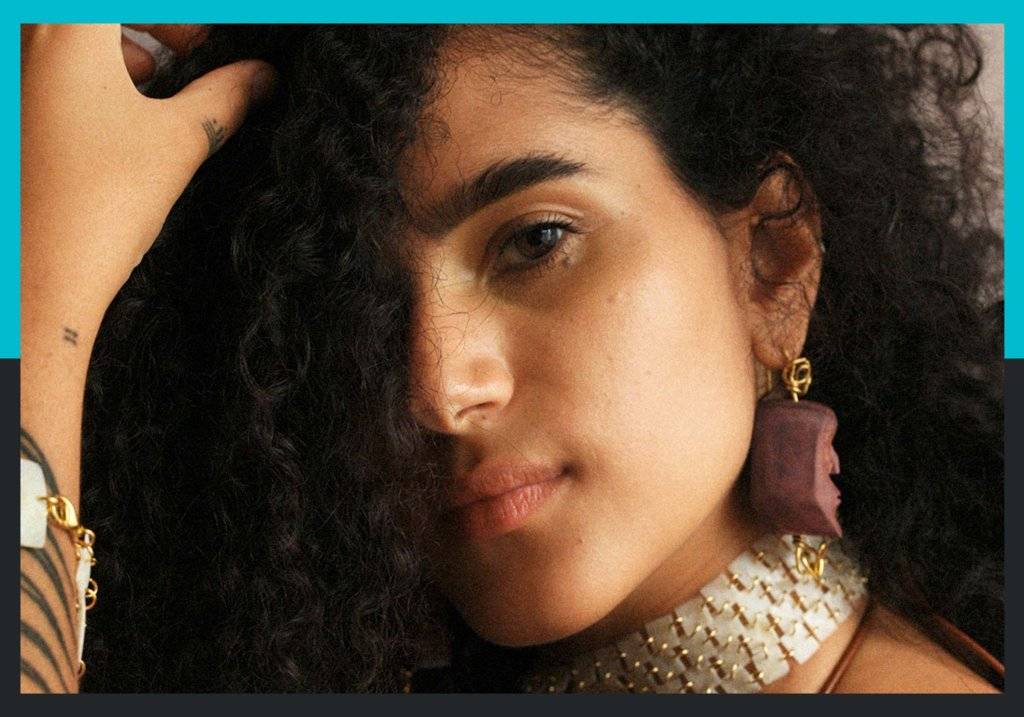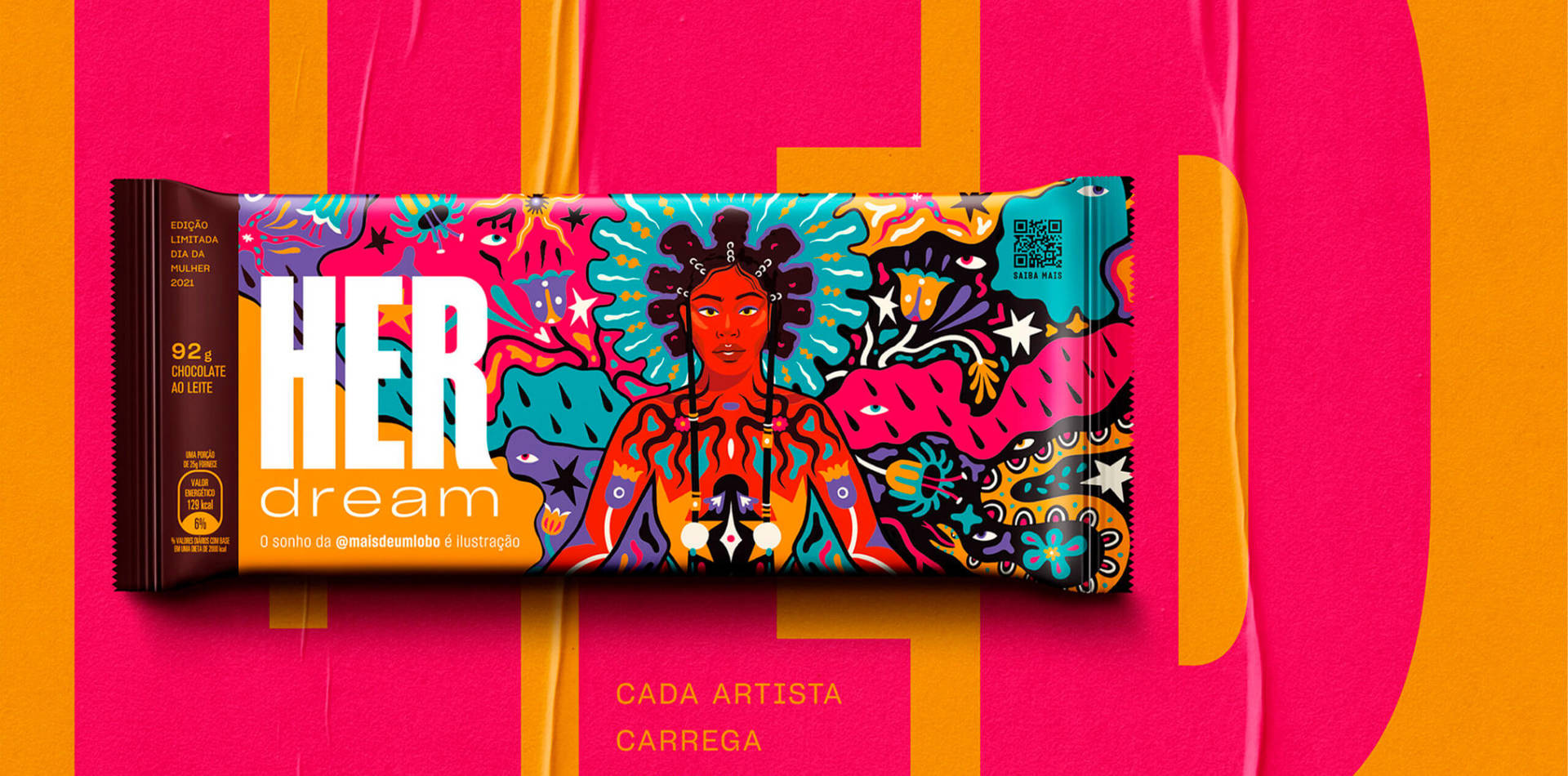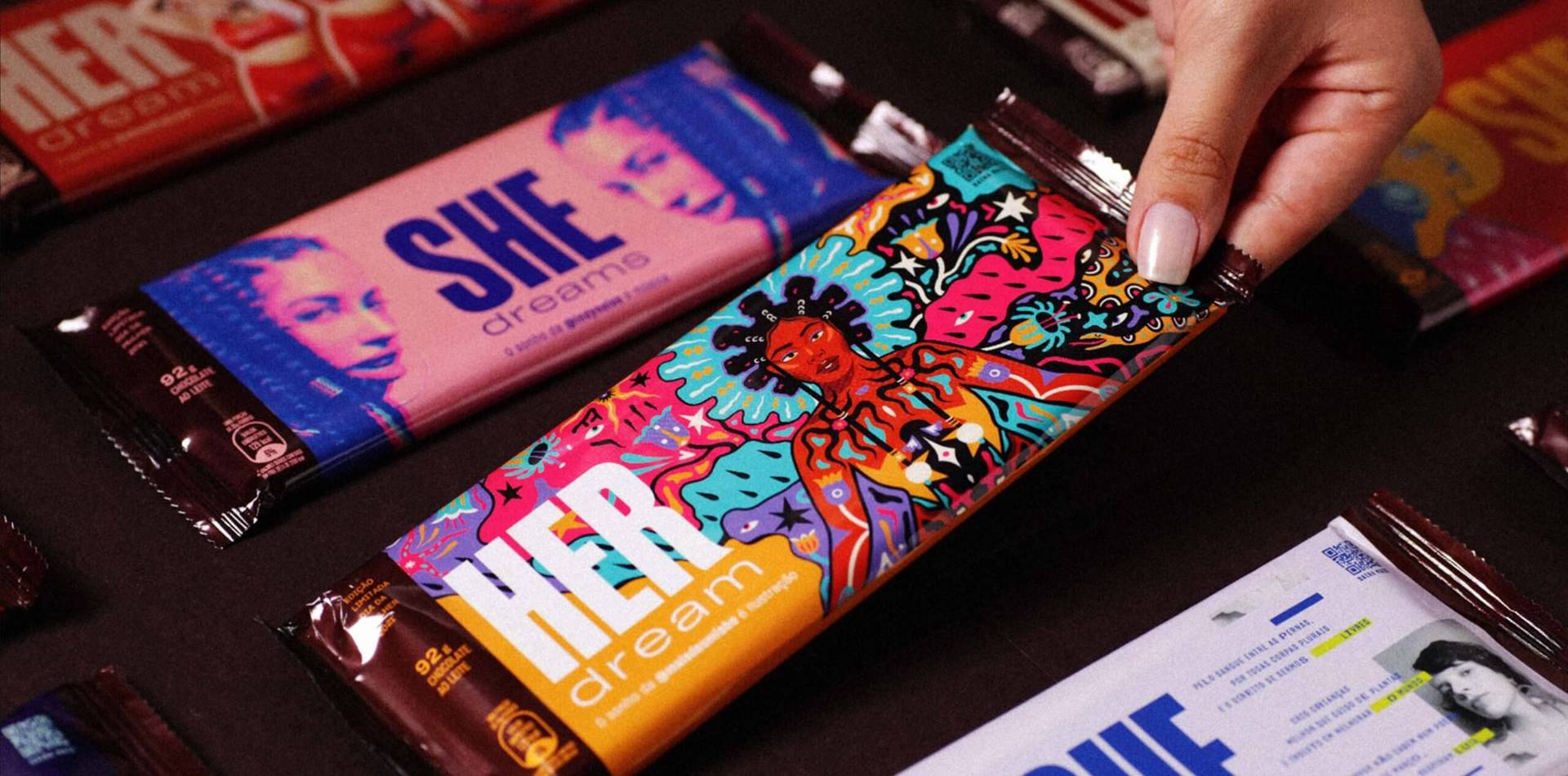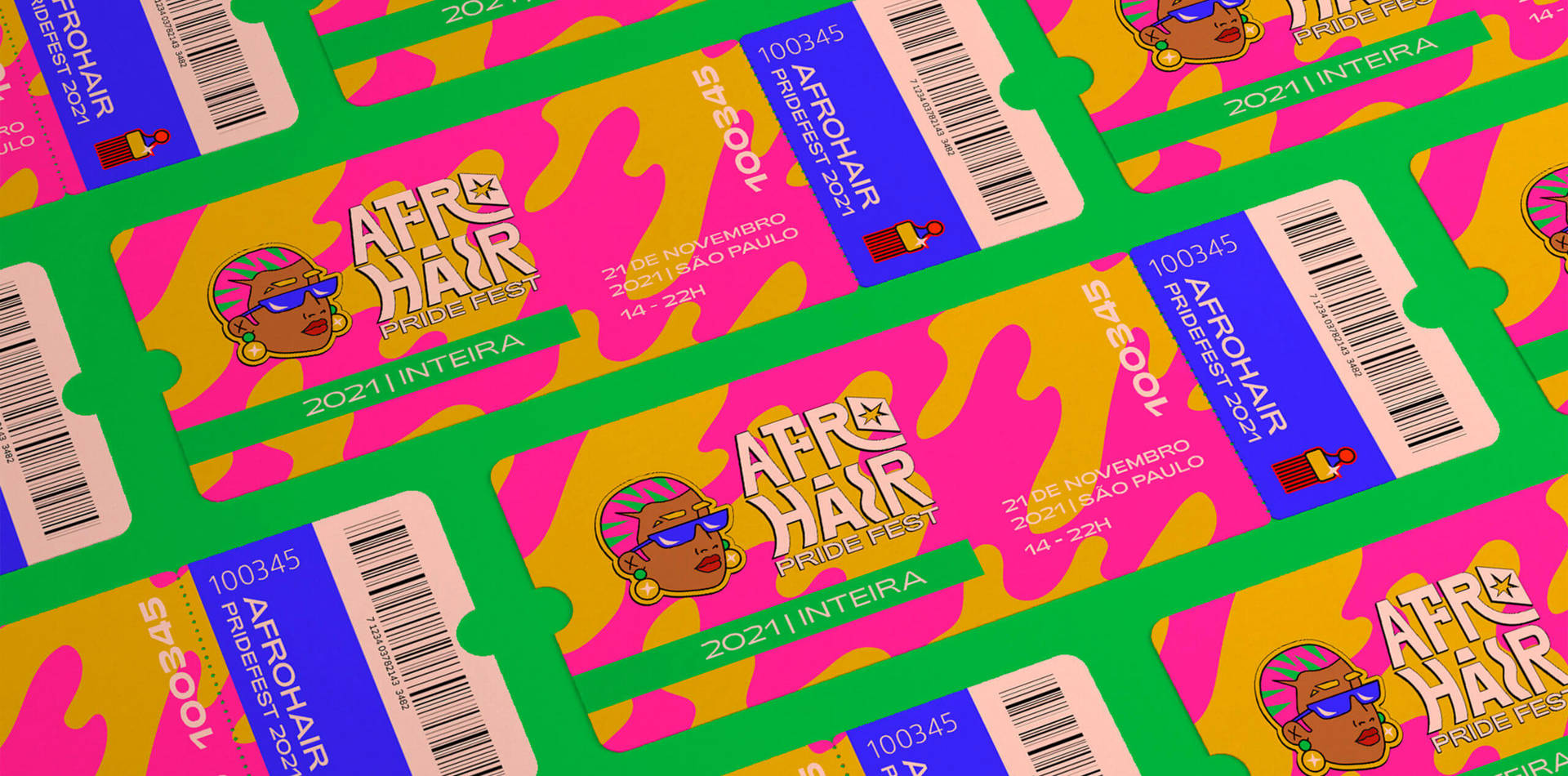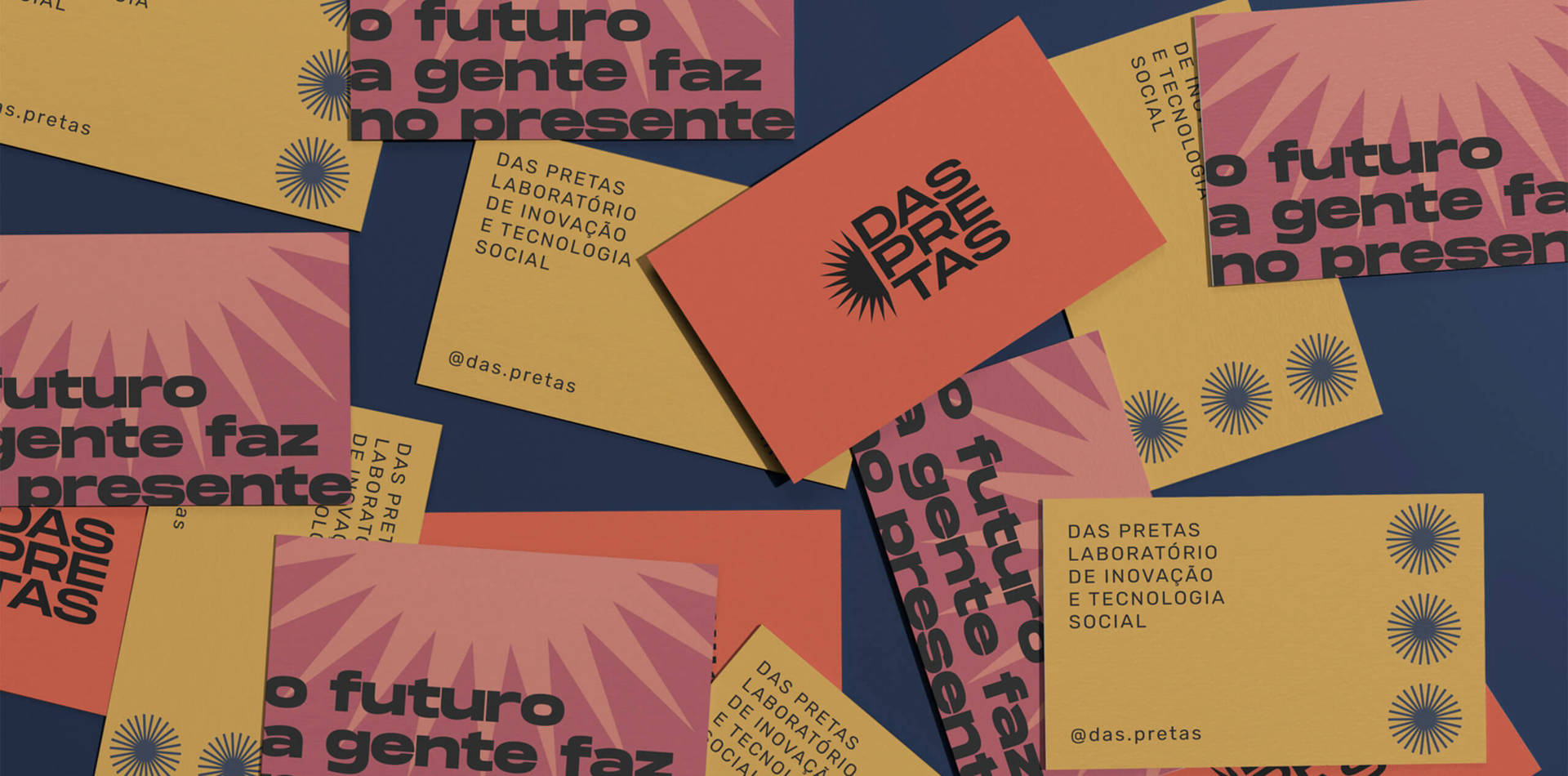Brazil-based Amanda Lobos is an emerging designer and illustrator whose vibrant body of work is packed full of playful illustrations and well-crafted branding projects. Often celebrating people of colour and her cultural background through her practice, recent projects have included visual identities for Das Pretas and AfroHair Pride Fest. This combined with her dazzling lettering and illustrations, has led to Amanda already working on projects for Snapchat, Hershey’s International Women’s Day campaign and being a member of the illustration team at the Adobe CoCreate: MAX 2020.
During the early stages of her career, Amanda often found herself devaluing her work. She’s learnt to be confident enough to say ‘no’ to projects which don’t align with her views or where the client tries to undercut her prices. As Amanda explains, “most of that insecurity was related to being a young black designer living in a country that also devalues the creative industry.” She notes the lack diversity and representation within the design industry and the fact there are so few women in leading creative roles, and the few that are, are predominantly white. Amanda believes, from her own experiences, that “programs, contests, open calls, and workshops directed at specific minority groups are an amazing way to create opportunity, qualify creators and motivate them to join the industry.”
In the future, a primary focus for Amanda is to keep working on projects she believes in and with companies that align with her values. She also hopes to be able to help other women of colour see that a career in design is possible and facilitate greater equality within the creative industries.

We can’t wait to see where Amanda goes next in her career and caught up with her to find out more about starting her career during a pandemic, her experiences as a young woman in design and learning the value of her creative work.
How has entering the design industry during a pandemic impacted your career journey so far?
I think it was bizarre for everyone to have to continue to function during a worldwide health crisis. Even more so to work in an industry can appear to be disposable and unnecessary to the rest of society. Most companies and institutions had to adapt quickly to an online world and to the possibilities of remote working. People from all around the world were considered in processes and opportunities that they wouldn’t have before, so for the first time I got the chance to work on international projects.
However, I feel like even though I had the opportunity to make some progress in my career and got to work on these projects, I’m not fully living it. I can’t ever be grateful for something that may have taken a totally different course, if we hadn’t gone through the millions of lives lost as a result, endorsed by the Brazilian president. I’m obviously grateful for the progress I made and opportunities I got, but there’s no way I’ll ever associate it in a ‘thankful way’ with the pandemic.
HERSHE: Illustration for Hershey’s International Women’s Day Campaign.
Has being a woman impacted your education and career so far?
I think being a black woman has impacted me more so. As we see across the world in all industries, white women are usually the ones that get to break into the male-dominated market, as women of colour watch from the outside. In the city where I live there are very few women in leading creative roles and the ones there are, are white. Gender inequality is a real problem, but analysing the racial aspect is necessary to gaining a fuller picture of the issue.
From my perspective, white people have a thing for cultures they don’t belong to. Cultures, style, aesthetics, clothing, have been used as a source of ‘inspiration’ to create ‘exotic’ design styles, which have been appropriated by white creatives and then get applauded for their innovative approach. Knowing that we, women of colour, are only the ‘source’ but not the ‘face’ of the ‘greatest expression of creativity’ is sad enough. But it shows that we own rich forms of art and expression that are incomparable to the dry, hygienist, European design—we must steal the spotlight back to where they should be in the first place.
“…where I live there are very few women in leading creative roles and the ones there are, are white. Gender inequality is a real problem, but analysing the racial aspect is necessary to gaining a fuller picture of the issue.”
Visual identity for the first festival edition of AfroHair Pride Fest, a London based initiative that gathers black people celebrating blackness and afro hair.
How do you think we can encourage greater diversity and inclusion across the creative industries?
Speaking from my experience, I believe programs, contests, open calls, and workshops, directed at specific minority groups, are an amazing way to create opportunity, qualify creators and motivate them to join an industry that most of the time they feel unwelcome in.
What do you know now that you wish you’d known when first starting your design career?
I wish I’d understood that my work is worth a lot more than what people make it out to be when they try and bargain for a lower price. I used to think this meant my work was that terrible and did the project, anyway, feeling that I should be grateful for every opportunity. Most of that insecurity was related to being a young black designer living in a country that also devalues the creative industry. I felt like people not only didn’t respect my work, but it was part of a wider social issue. Now I understand that the value I place on the work I create and pricing my work are different things, but they walk alongside each other sometimes. On top of that, I wish I’d known how to say ‘no’, it would have saved me a lot of crisis, stress, and burnouts.
Visual identity and logo redesign for Das Pretas, a Brazilian Institute focused on social technology and work opportunities for marginalised black women.
What are your career plans or goals for the future?
My goal is to keep working on projects that I believe in and with companies that respect me as a designer. Hopefully, I can carve a path for others, like me to follow. It’s important that people see there’s ways of breaking down barriers and getting to be part of places we’re not encouraged to believe we can occupy.
Also, I’d really love to paint a mural on a building – I think that’s an amazing way of getting art to the most diverse range of people without relying on the internet’s limited reach. I’d like to finish my graduation too.
“It’s important that people see there’s ways of breaking down barriers and getting to be part of places we’re not encouraged to believe we can occupy.”
Name your top three creative crushes currently working in the industry?
- Giulia Fagundes – Designer
- Ziza – Visual Artist
- Kika Carvalho – Visual Artist
